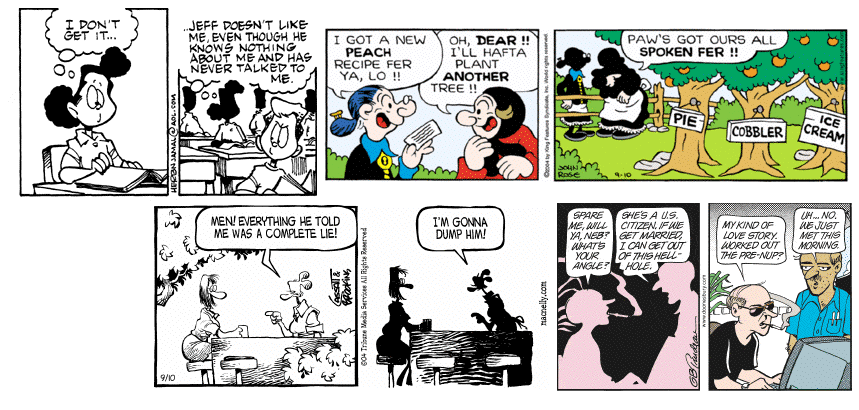Ha, ha! That Donald Trump! He sure is a jerk!
Post Content
Doonesbury, 10/1/04

OK, so let’s see. The U.S. is in the middle of fighting two wars right now, by my count, one of which managed to get almost every other country on Earth to hate us. The current president is one of the most polarizing political figures since Nixon. And we’re a month away from an election that both sides are calling the most important in decades.
And so of course, Doonesbury is spending a week focused on The Apprentice.
I do still like Doonesbury generally, but it’s definitely been getting creakier. It’s hard to do pop cultural commentary when you’re not particularly in touch with pop culture anymore. If you really want your TV watching mingled with political commentary, I guess you have to go to The Boondocks. There at least the characters talk back to the TV, instead of grinning like morons like Zipper here. I’m misquoting what someone else said online here, but: Remember when Doonesbury used college students to make fun of adults, rather than to make fun of college students?



